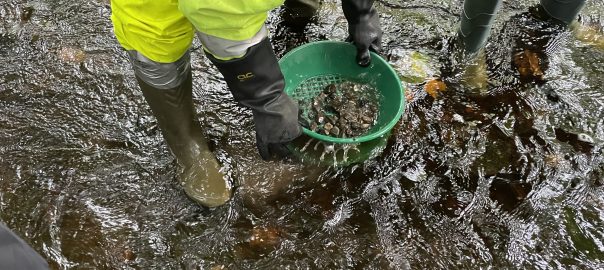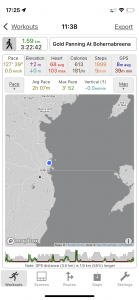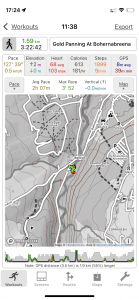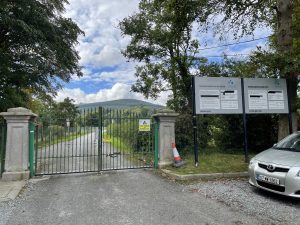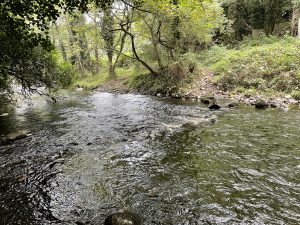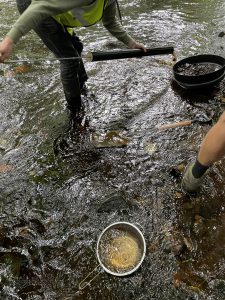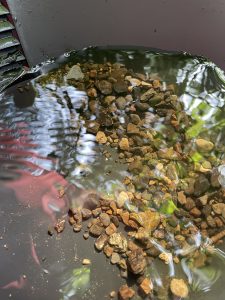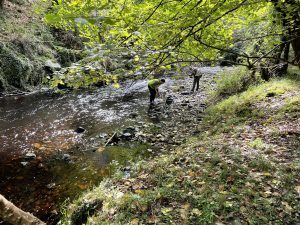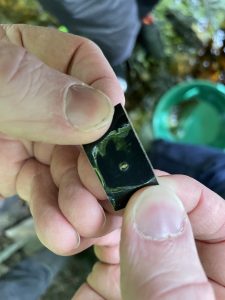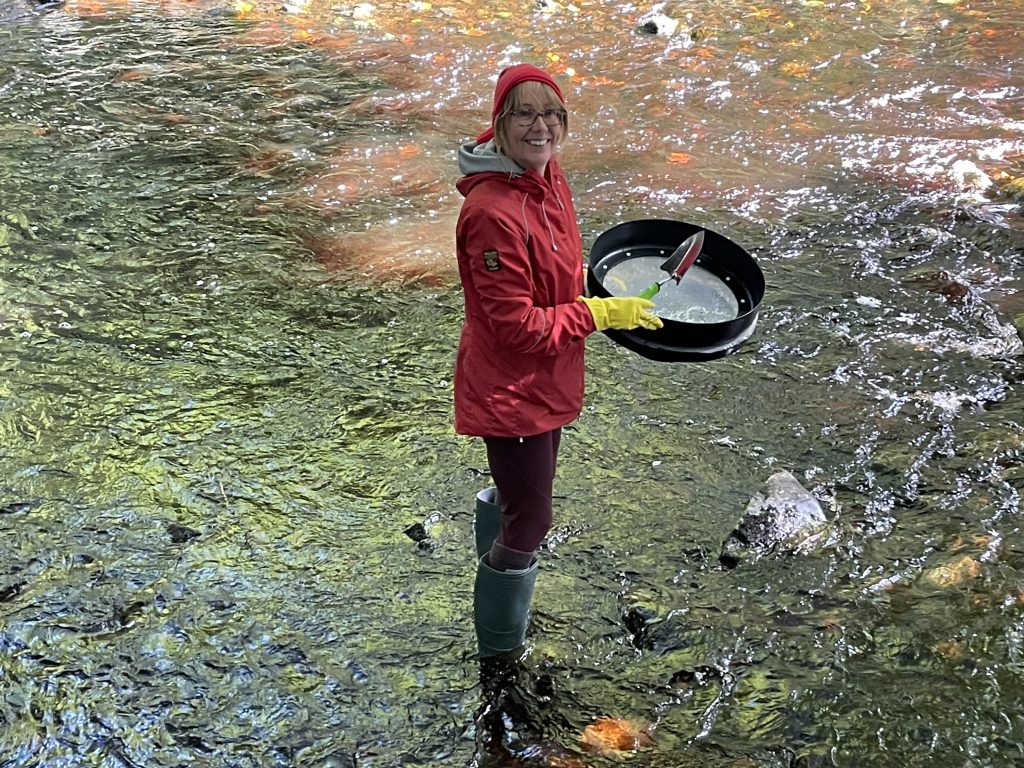Ireland day 0361. Saturday 24 September 2022- Gold!
Commentary
Val and I left Malahide this morning with high hopes of being able to come back later in the day with sufficient new found wealth to ensure that worries about the cost of living crisis and the plunging pound could be consigned to history.
You might well think that with an opening sentence like that we were on our way to make a massive investment in lottery scratch cards or perhaps even heading back up the coast to spend a day at the Laytown races. But no – what we were doing today was perhaps even more exotic, because actually we were going panning for gold.
The Wicklow and Dublin hills were formed some 445 million years ago when a massive batholith of granite was intruded under the pre-existing “country” rocks. The heat “cooked” the overlying rock and metamorphosed it, in the process laying down veins of metals including lead, zinc, iron and gold. The minerals have often been mined – for example the lead mines in Glendalough and Glendasan, and the zinc mine at Navan. The gold is extremely scarce and generally not worth mining in this part of the world at least. But the process of weathering the overlying rocks washes flakes of gold out of the bedrock and because it is so heavy, the flakes tend to sink to the bottom of the rivers and streams and accumulate in the alluvial gravel where they can be found by ardent panners. Like us.
But anyone seeking the “mother lode” – a rich vein of solid gold which would be the source of these flakes – would be disappointed. It’s thought that the gold is very finely dispersed through the rock – even in the enriched veins – and it is generally washed out in tiny particles. As these particles tumble through the streams, they eventually bump into each other and through a process of accretion stick together and form larger flakes. (A similar process, incidentally, is thought to have been involved in the formation of rocky planets when the solar system condensed out of the accretion disk surrounding the proto-sun 4.6 billion years ago). In the case of river gold, according to this theory, gold nuggets aren’t actually big chunks of solid gold that have been chipped off a massive rich mother lode, but rather just the chance result of the accidental clumping together of innumerable smaller flakes over many many years.
So the idea today was to join an expedition led by the Irish Geological Association (IGA) to the Dodder valley, to see if we could happen across any golf-ball sized nuggets of gold lying around in the river bed. The IGA provided the gold pans and sieves – all we had to do was turn up with wellies and rubber gloves.
The first and probably most important thing I learned about gold panning is that it is extremely tedious. You scrabble around in the river bed to get suitably fine gravel – the best place to dig is in the eddies behind a boulder, where the water flow slows and any gold flakes that are being carried along by the flow tend to drop to the bottom. Then when you have a shovelful, you dump it in a sieve to get rid of the big pebbles and throw away the stuff left behind (taking care to cast an eye over it just in case there really is a golf ball sized nugget in there). Then the finer sediment you put in a pan and swirl it round and round while anxiously poking at it and seeing if you can spot any tell-tale yellow grains in there.
We were initially pretty excited by this process as we did spot some yellow grains quite early on but on closer inspection by one of our expert leaders, it turned out that they were actually just flakes of mica. Similar disappointments followed when the remaining flakes were again discounted by our expert who tested them with a magnet and determined that they were probably haematite (an iron oxide).
So we panned away for a happy hour or so then paused for lunch – it’s quite hungry work splashing around in a cold river up to your knees and elbows in icy water. By this stage nobody in our fifteen-strong team had found anything at all. Though others did retrieve a trowel, a broken shovel and a bicycle, which partially made up for the blank we had drawn on the gold front. After a long time spent chatting over lunch – this is Ireland, after all – we resumed our digging and dumping but following many false dawns, a couple of hours later we decided to cut our losses and draw things to a close.
But not without our resident geologist leader first showing us what was actually supposed to happen – by panning some gravel he’d brought from a particularly gold-rich stream in Scotland. In this case, a couple of tiny specks of gold were instantly visible – they were quite distinct in colour and tone, and because of their weight, stayed resolutely still at the bottom of the pan while the other material swirled round. He did tell us than on previous occasions panning here in the Dodder, participants had found grains similar to this but for some reason we didn’t get lucky today. Maybe the heavy rain on Thursday washed everything away.
Nevertheless it was an extremely enjoyable and really quite unforgettable outing. And that was despite the disappointment of not needing to use the large carrier bag I had brought with us with the specific purpose of carrying back the hoard of giant nuggets that I fully expected that we would have retrieved. So the cost of living crisis hasn’t been dispelled, sadly, and I have concluded that as a tactic for dealing with escalating food bills, scouring the supermarkets of Malahide for double sticker bargains is likely to be more productive than scouring the bottom of the Dodder River for flakes of gold. Hey ho, it was a fun day out anyway.
Today’s photos (click to enlarge)
Interactive map
(No map today)
